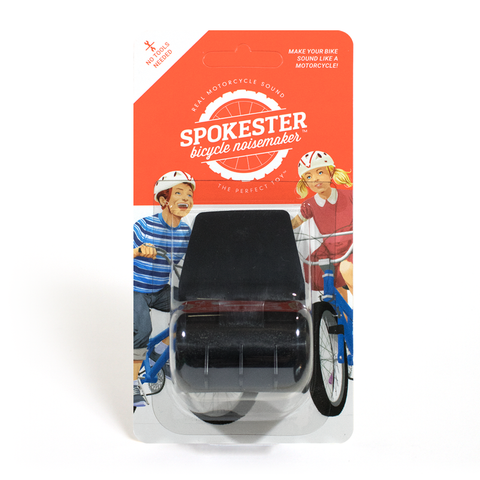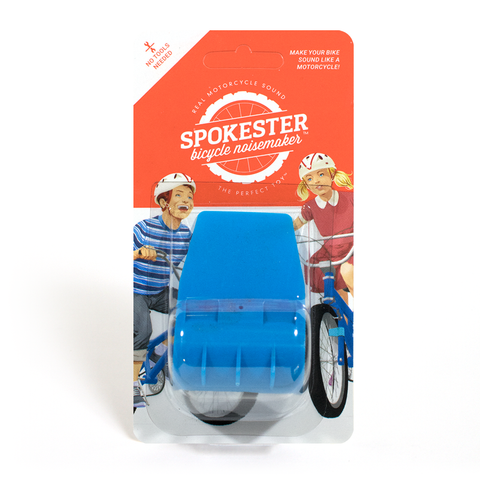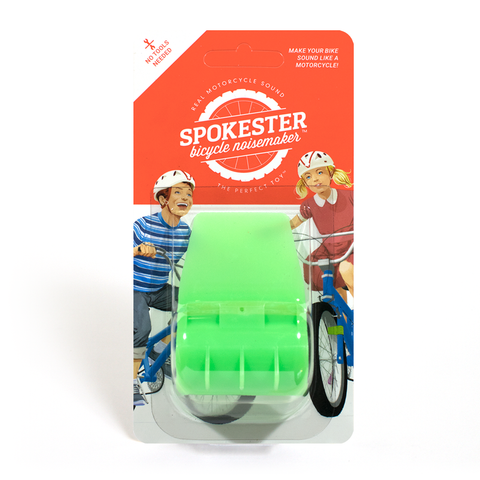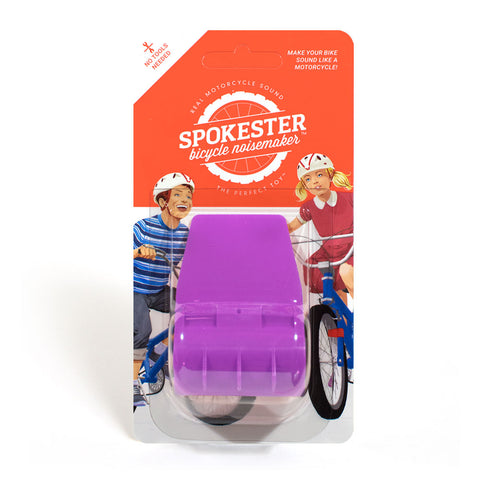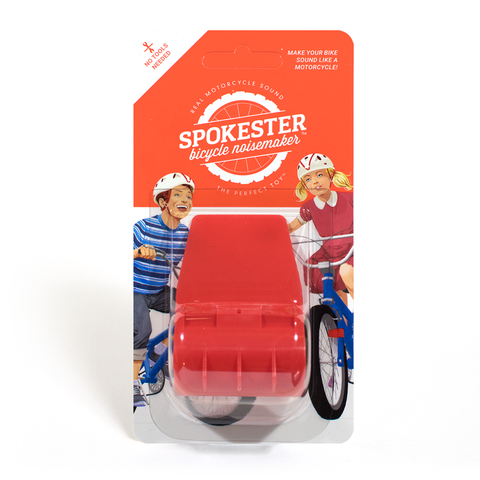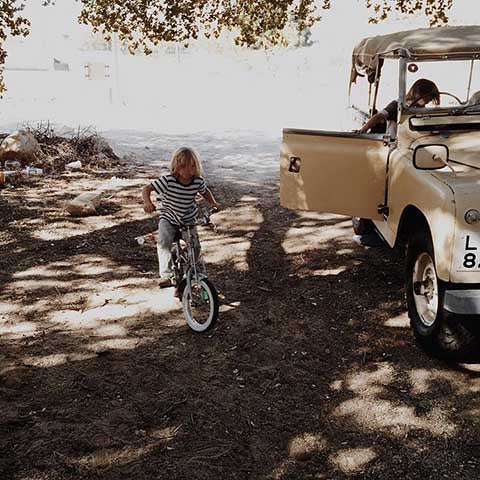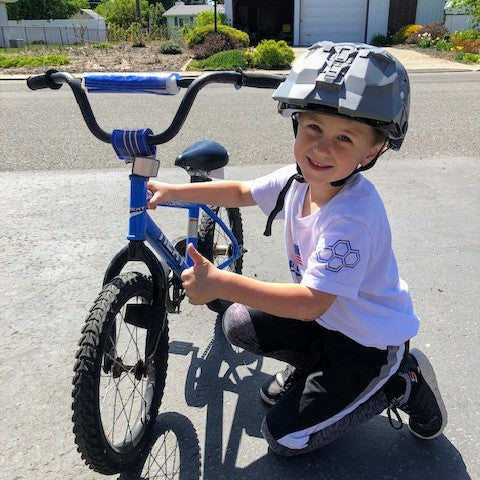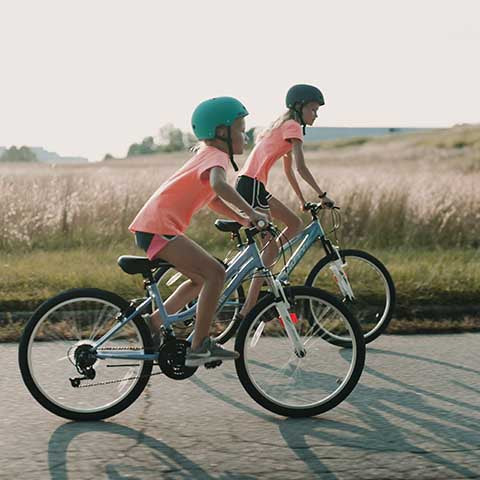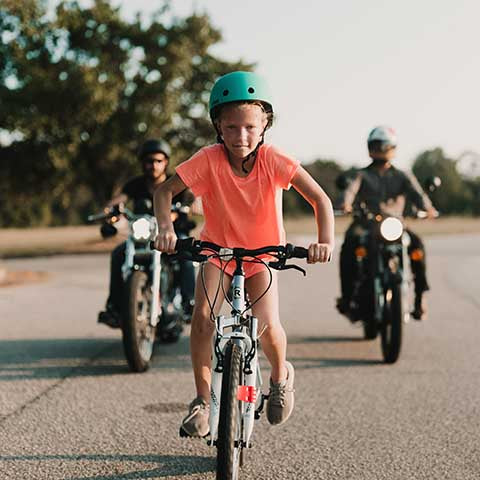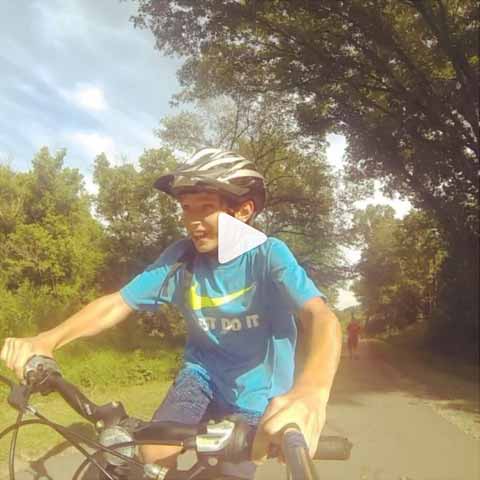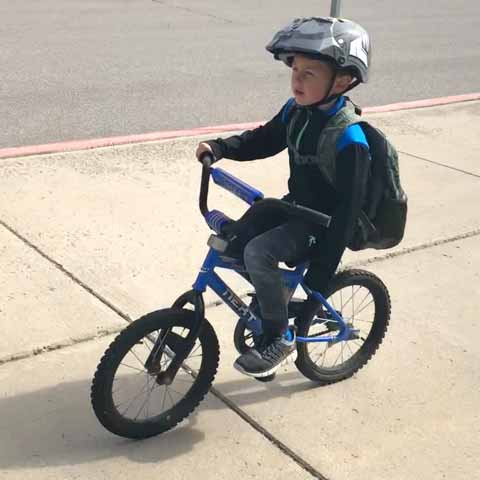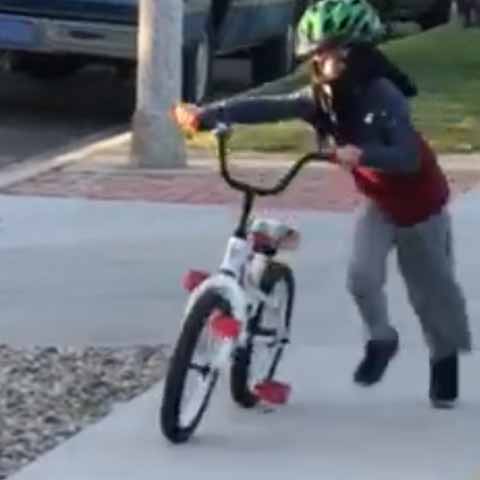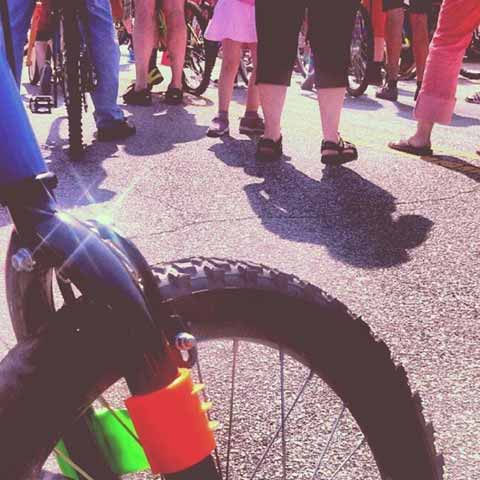Specialty Bikes Guide Part 3: Kids' BMX Bikes
In Part 1 and Part 2 of our specialty-bike series, we talked about kids' mountain and road bikes, respectively. Let's switch gears here. In fact, let's get rid of gears altogether. When it comes to single-speed kids' BMX bikes, you're not going to need them. So does that make BMX simple and straightforward?
Ahh, no.
Because of the multiple styles of riding involved with BMX, there are actually even more variables to consider than mountain or road cycling. BMX is a specialty bike with its own specialty bikes! With this in mind, and given that there's a lot of crossover when it comes to making sure kids are ready for specialty bikes of any kind (like measurement, developing coordination, etc.), we're going to concentrate more on laying out what BMX is and what to look for in a bike in this post than in our first two parts.
BMX biking overview
Short for "bicycle motocross," BMX was born in the late 60s and early 70s as an offshoot of motocross motorcycles. Like their gas-powered cousins, BMX bikes were designed for racing, jumping, and tearing around on dirt. They grew more and more popular as the decades went by, and it's become just as common to see kids biking to school on a BMX as it is to see them hopping ramps in the backyard. These days, BMXing is a legit sport sanctioned by the governing body of cycling UCI (Union Cycliste Internationale) and featured in the Olympic Games. So, think twice before telling junior there's no future in playing in dirt piles.
Unlike, say, road bikes that are all made for roads, BMX bikes don't really have a universal template. People in the biz break down the different categories in different ways, with some dividing them into two main kinds, others three, and still others a handful. We'll go over the primary types of BMX bikes you'll find on the market and you can be the judge.
Race BMX
This is the one that started it all. As you would expect with a name like "race," these bikes are designed to go fast. They're made from lighter materials than other BMXs to help with speed and acceleration. Their geometry is also slightly different to help with stability and rigidity while on the move. Hard-packed dirt is the traditional race BMX floor, although tracks have started using different surfaces as the sport has evolved. Regardless of what you're rolling over, you'll be avoiding obstacles, zooming up and down changing terrain, and attempting sizable jumps. Since all of this means that race models are built for a single purpose, they don't translate well to other BMX styles.
Freestyle BMX
Freestyle followed hot on the heels of race. These bikes are meant for streets and skate parks and allow for all kinds of tricks. Given the pounding that comes with performing stunts and jumping off rails and half pipes, freestyle models are built for both strength and maneuverability.
Although you can buy a freestyle BMX that is simply a "freestyle BMX," there are several subsets within this discipline that have subtle nuances when it comes to their main purpose. Here are some terms to be aware of when you're out shopping for your aspiring vert ramper.
Park
Surprise, "park riding" means riding in parks. Skate parks, to be exact. BMXs in this category are finely attuned for encounters with similar obstacles and surfaces as those attempted by skaters.
Street
Those kids jumping up and down the steps of downtown businesses after-hours are most likely using street-style BMXs. They're designed for everything from basic pavement pounding to more advanced challenges like rails and stairs. Urban infrastructure beware.
Flatland
Sometimes referred to as "breakdancing on a bike," flatland BMX is a style all its own. Rather than pulling stunts off of various structures, flatland BMXers perform tricks on even level ground using impressive jumps, pivots, and displays of balance.
Dirt jumping BMX
Some BMX pros will put this one under freestyle, others give it its own category. One of the reasons is because dirt jump (aka just "dirt" or "jump") BMXs tend to bridge race and freestyle models in weight and design. They hold up nicely during rough landings while performing well on trails and dirt. We'll get into some of the other unique features of jump bikes as we go.
What makes a kid's BMX bike a kid's BMX bike
BMX bikes are strong, lightweight, and speedy, which is probably why they've become so popular. They're also diverse, as we've just established. BMX bike construction depends on its main purpose, and this extends all the way from the frames to the accessories.
Most freestyle bikes are made from chromoly. "Chromo" is an alloyed steel that provides far more strength and sturdiness than your average frame. Steel is also easy to repair, which is a big consideration given how these things will be used. The exception to the rule is flatland frames. Meant specifically for tricks, flatlands are lighter to control weight and use shorter tubing for improved balance.
Frames on race BMXs place riders further back on the bike to support stability and handling. They also come in a wider range of sizes for racers across age groups. Regardless of size, stiff and light are the pillars of race BMX. Although freestyle chromo is usually less expensive, aluminum BMX frames cut down on the weight. Lighter still is carbon fiber, which also reduces frame vibration. Just know that lighter equals speedier, and speedier often means pricier.
Wheels are a big differentiating factor for BMXs. Once kids move past the 16" and 18" sizes as they hit their spurts, standard wheel diameter is 20". This is smaller than full-sized mountain and road bikes, though some jump BMXs do use 22" or 24" wheels. Rims are usually aluminum and can be single-, double-, or triple-walled. Essentially, more layers leads to more strength. As a result, freestyle and jump bikes steer toward more rim walls than racers, which go the other direction to minimize weight for faster acceleration out of the gates.
Similarly, wheel spokes vary from one BMX style to another. The 32-spoke set used by light racers won't take the beating associated with freestyle activities, which require 48. Jump bikes can swing either way depending on how they're more likely to be used (i.e., racing vs. jumping), and some even split the difference and go with 36 reinforced spokes.
When it comes to speed and handling, tires play a major role. Given the wide variety of BMX rides, there's a corresponding wide variety of BMX rubber. Race tires need to perform off-road, but since hard-packed dirt is common on tracks, they need to also work well on firmer surfaces. Balance between speed and grip is important for the type of hard riding and tight banking racers face. Since speed isn't as big a deal for dirt jumpers, these guys have tires with more tread. They also tend to be slightly underinflated for even more traction. On the other end of the spectrum is freestyle. Loose soil isn't a factor on pavement, so smooth treads are the way to go here.
Gears are yet another consideration most mountain and road riders usually don't need to worry about. As your little BMXer gets older, you may find yourself checking out gear ratios, which is the pairing of teeth on the chaining and the sprocket. The lower the ratio, the easier it is to pedal. This is good for freestylers who need to accelerate quickly into jumps and tricks. Racers prefer a higher ratio because more resistance when pedaling lets them generate more power and therefore more speed. Related to this is another key part of the bike's drivetrain, the cranks. For similar reasons to the gears, freestylers prefer short cranks between the pedals and axle for better clearance over obstacles. Racers need more explosive power, so longer cranks give them more leverage.
With all of the speed and momentum BMXers produce, a nice set of brakes comes in handy every once in a while. Racers and jumpers usually only have rear brakes. Freestyle bikes come with both a front and rear set. Some also feature a "detangler," which prevents the hand-brake cables from getting tangled when riders spin the handlebars all the way around during tricks such as tailwhips.
The handlebars themselves vary in style and position across the BMX lineup. Freestyle and jump bars are set at steeper angles than race bars for greater maneuverability during tricks. Stunt-happy flatland riders use nearly vertical bars so they feel the same whichever direction they're pointed. Their crossbars are also lower so that it's easier for the acrobats to swing their legs over.
Speaking of stunts, you may have noticed some BMX bikes sporting little metal rods sticking out of the wheel hubs. These are called "pegs" and are pretty much exclusive to freestyle. Pegs help flatlanders balance during tricks and street and park riders do grinds across edges and rails. Pegs are a no-no in race BMX.
How to know when your child is ready for a BMX bike
BMX isn't quite as cut and dry as our other specialty bikes now is it? The need to understand basic cycling skills (e.g., balance, coordination, steering, etc.) is the same as any other kind of two-wheeler. But, with the various styles of BMX in play, it's important to know what your son or daughter wants to do with the bike (other than ride to the store or pool) in order to look for the right model.
The truth is, maybe they don't even know what they want. For beginners who are just entering the world of BMX, freestyle might be the way to go. These tend to be the most versatile and are good choices for everything from everyday street and park riding to basic tricks and jumps.
Regardless of when they start BMXing, it's crucial that they have the right protective gear for however they intend to ride. Headwear in particular is super important, and some bike helmets are even made in the skate style for freestylers who want to look the part at the park. Check out our helmet guide for info on keeping their noggins safe on the street.
Tips for developing kids' BMX-biking skills
BMX is new and niche relative to mountain and road. Odds are you haven't done much in the way of serious BMXing yourself, even back in the day. That's all right. Common sense and knowing when to reach out to the experts is all you need to make sure your little racer, freestyler, or jumper is safely learning the ropes.
As mentioned, freestyle bikes are most common for beginners who are just dipping their toes into BMX and want to feel out what part of the sport they like best. Consequently, these models can be found in most bike retailers. Once your kid has some experience and figures out a preferred riding style, consider taking him or her to a BMX-only shop. Not only do these specialized stores offer the best models, but the avid BMXers who run them know their stuff better than anyone else in town. When it comes to a niche sport that requires unique skills and knowledge, sometimes it's best to defer to the pros.
So there you have it. Three different run-throughs for three different kinds of specialty bikes. Whether your children veer toward big-mountain single track, stick to the highways and byways of road cycling, or dream of BMX glory at the X Games, at least they're staying active and having fun. Oh, to be young again!
← Older post Newer post →
